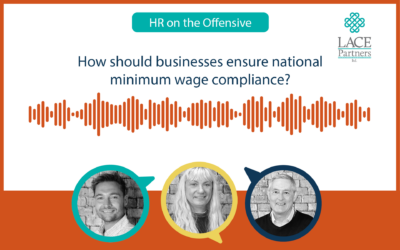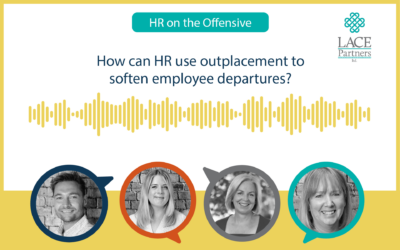In a recent ‘HR on the Offensive Podcast (you can subscribe to the podcast here) Chris and Aaron spoke to Nazir Ul-Ghani, Head of Workplace by Facebook. In today’s blog we wanted to bring you some of the key points that were discussed, including how people have quickly adapted to life during lockdown and how collaboration tools, that enable online engagement with work colleagues, have played such a big part, as well as what the future holds for the evolution of the space.
How have the workplace communities you look after on Workplace changed over the last few months of lockdown?
The big change has been the fact that we have this tremendous amount of people working remotely, and that this change has happened fast. Satya Nadella, CEO of Microsoft, mentioned that we have seen two years’ worth of digital transformation in only two months. This is obviously a massive digital transformation but these transformations are also around people. This is where HR has been gifted an opportunity to ensure that the processes by which People are communicated to and engaged are managed effectively. Initially, what we found through speaking to hundreds of CHROs was that the first thing they really wanted to do was the react and adjust to what was going on. Once that was done, it was around making sure people were engaged.
We’ve seen some businesses which have been really successful in making this happen, either with the technologies they already had or by bringing on new technologies. I think we need to build the digital with the physical to make sure a company is as productive and as engaged as it can be.
Are you seeing leaders or managers using Workplace in a different way now than they were before?
We have customers globally which use the platform to engage their employees, using it more than ever before. What we call the ‘monthly actives’ and ‘daily actives’ have increased substantially. As you know from a Facebook perspective we have 3.14billion people using our family of apps on a monthly basis, and even though we’ve seen our existing customers increase their usage, we’ve also had others come to ask “can we adopt your platform to help us address the COVID-19 crisis because we really need to connect with our employees. A lot of these employees are frontline, they do not have emails, and we want them to receive the company messages”. The sentiment coming from CHROs seems to be “how do we care for our employees; how do we keep them engaged while they work remotely?”
Employees are currently dealing with lots of change and lots of new systems and processes. What is your view on how this experience can be streamlined and improved?
From a HR perspective there is a demand to make sure that the user experience we give our employees is one which is engaging. One of the reasons why Workplace has been successful when we speak to companies which adopt is because of its intuitive usability. As the user experience is very familiar and mobile-first it is very easy for people to engage with, which is key for connecting everybody in the organisation. For too long applications were designed around people who sit in an office, but what this crisis has shown us is the importance of the work that is done by frontline workers, who might not have had much access to the wider business or in some cases may not even know who their CEOs are. Which is why you need tools which are simple, mobile-first, allowing for interaction with employees that did not have access to these tools previously.
We have integrations with many ‘best of breed’ systems, such as Workday and others, because we want it to be as easy as possible for people to do all their work from one platform. We announced two years ago fifty integration points, including HR, payroll, expenses, which allow a person to carry on working, be collaborative and productive as they move between apps.
Thinking about the different personas we have in businesses is crucial as increasingly applications need to be relevant for everyone. Moving away from efficient HR processes for the sake of efficiencies and moving towards employee centric processes has been an ongoing theme for many businesses but knowing how to do it consistently and well is still being developed.
Through this COVID period, it really feels like collaborations and community platforms like Workplace are really owning this space, as this is where employees are connecting to the business and each other.
We have talked about digital transformation, but another core theme is the leveling of access. We work with many large organisations globally where some employees may never meet their manager or CEO and may have only seen a poster on the shop floor which will let them know what is going on. This is one of the reasons I joined Workplace, as it allows businesses to identify people who are doing great work no matter where they are in the organisation, to recognise them, and to get ideas from them. You are only as strong as every individual in the organisation.
Collaboration tools are also helping businesses to be transparent with their employees. A good example of this is where the CEO of BT put together a video at the start of the crisis as there were concerns that people would be made redundant. He reassured his team by telling them that would not be the case, that they would be hiring more engineers and increasing some salaries. This was a fantastic example of leadership, where transparent leaders want to break down silos and get close to their business.
That’s a great point about the humanisation of leaders, making them accessible. Peer-to-peer communities and sub-communities within an organisation are also benefitting, and further establishing company culture.
Yes, there was a LinkedIn post recently from one of our customers Pladis quite recently, who own the brand McVitie’s biscuits, amongst others. They have been using Workplace for a couple of years, but their CEO Salman Amin went live for the first time a couple of months ago across 150 locations to do a Q&A with all of his organisation and now they also do virtual biscuit breaks too. Another great example would be Telefonica, who would often go live with the results of performance. He asked his employees to each suggest what would make them better as an organisation and got 1,000 ideas back. Their steering group reviewed all the responses and decided to make changes to their strategy. Just think about how you would feel if you sent across a suggestion that your CEO and steering committee actually read; I think that’s the kind of organisation you want to work for.
Do you think that the working from home culture where you can see your leadership teams inside their own homes has helped people feel more at ease and speak up?
We are seeing so much of that authenticity coming through. Many organisations want to connect with employees and increase engagement to amplify their culture. Aaron mentioned a future of hybrid working environment, where there are head offices, remote local offices, and home working. We need to figure out a really good way of managing that, and it is crucial to get it right. We are working with a large organisation who have over 100,000 employees on Workplace who created one group exclusively for the COVID crisis so that employees globally could communicate and share stories on how they were addressing the crisis locally and uplift one another.
The last three to six months have rapidly accelerated the consumption of technology, beyond our wildest dreams. The feedback we’ve had from CHROs is that they initially were not sure that people could be as productive working from home, but that this has proven that many people can.
Do you think we have seen more innovation from the collaborative tech providers on the market, and where do you see the technology going in the next 12 months?
There are some great technologies available, and as it is being adopted more you can see how businesses are using it to innovate. One of our customers, Joanna Swash the CEO of Moneypenny, told us how a few weeks ago that they created some bots for their employees to get a sense of how they feel. Another of our customers have built bots to allow people to understand what they would receive for their furlough pay.
In terms of the future, it sounds like most businesses will be adopting a hybrid model of working and potentially not a lot of people will be going back to work fully for some time. We need to figure out a better way of enabling people to work and speak to colleagues in different locations. What we have been doing at Workplace is developing how we can build a platform which has a remote presence, but which makes you feel like you are working in your office.









